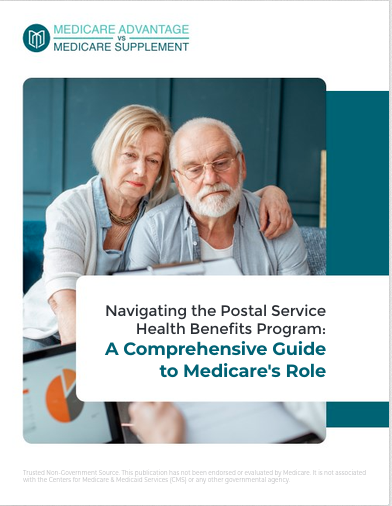Key Takeaways:
- Medicare Advantage plans and Medicare Supplement plans both address prescription drug coverage, but their approaches differ significantly, influencing costs and flexibility.
- Knowing the strengths and limitations of each option can help you tailor your healthcare coverage to your specific needs and lifestyle.
Navigating Your Prescription Drug Coverage Options
When it comes to managing your healthcare, prescription drug coverage often plays a pivotal role. With Medicare, you’ve got two primary paths to consider: Medicare Advantage (Part C) plans and Medicare Supplement (Medigap) plans. Each has its strengths and limitations, especially when it comes to drug coverage and flexibility. Understanding how they compare can make a world of difference in choosing the plan that suits you best.
How Medicare Advantage Plans Handle Prescription Drugs
Medicare Advantage plans typically bundle all your Medicare benefits into one plan, including prescription drug coverage. These plans are required to offer at least the same level of coverage as Original Medicare, but they often go beyond that with additional perks.
Prescription Drug Coverage is Often Built In
Most Medicare Advantage plans include prescription drug coverage through Medicare Part D. This bundling can be convenient—you don’t need to worry about signing up for a separate drug plan. The integrated approach means you have a single card and one point of contact for all your Medicare needs.
Formularies Can Limit Flexibility
While it’s handy to have drug coverage included, Medicare Advantage plans use formularies (a list of covered medications) to dictate what drugs are covered. These formularies can change annually, and drugs are typically organized into tiers, with varying out-of-pocket costs.
Network Restrictions Apply
Medicare Advantage plans often operate within networks of preferred pharmacies. While this can help keep costs down, it might mean limited options for where you can fill your prescriptions.
The Role of Medicare Supplement Plans
Medicare Supplement plans are designed to work with Original Medicare, filling the gaps in coverage such as copayments, coinsurance, and deductibles. Unlike Medicare Advantage, these plans do not include prescription drug coverage.
Separate Part D Plan Needed
If you opt for a Medigap plan, you’ll need to enroll in a standalone Medicare Part D plan to cover your prescription drugs. While this might seem like a hassle, it allows greater flexibility in tailoring your drug coverage to your specific needs.
No Network Limitations
Medicare Supplement plans offer unmatched flexibility in terms of healthcare providers and pharmacies. You can go to any doctor or pharmacy that accepts Medicare, which is especially beneficial if you split your time between different states or prefer a wider range of pharmacy options.
Comparing Costs: Advantage vs. Supplement
The cost structure of Medicare Advantage and Medicare Supplement plans differs significantly.
Monthly Premiums and Out-of-Pocket Costs
Medicare Advantage plans often have lower premiums but may include copays, coinsurance, and deductibles for prescription drugs. These out-of-pocket expenses can add up, particularly if your medication needs change or increase.
Medigap plans, on the other hand, generally have higher premiums but fewer out-of-pocket expenses when combined with a Part D plan. This predictability in costs can be a relief if you require extensive medication.
Is One More Affordable Than the Other?
The affordability of a plan depends on your healthcare needs. If you take few prescriptions, a Medicare Advantage plan might offer cost savings. However, if you rely on several medications or require expensive drugs, the predictability of a Medigap plan paired with Part D can be worth the higher premiums.
Flexibility and Control: What Matters to You?
Your personal preferences and lifestyle play a big role in deciding between these plans.
Medicare Advantage: Structured and Convenient
With everything bundled under one plan, Medicare Advantage offers simplicity. However, this structure may come with limitations, such as restricted networks and less freedom in choosing your providers and pharmacies.
Medigap: Freedom and Flexibility
Medigap plans are ideal for those who value flexibility. You’re not tied to specific networks, and you can choose any pharmacy or provider that accepts Medicare. Pairing Medigap with a standalone Part D plan also means you can choose the drug coverage that works best for you.
Enrollment Timing is Key
The timing of your enrollment can significantly impact your options and costs.
Initial Enrollment Period (IEP)
Your IEP begins three months before your 65th birthday, includes your birthday month, and ends three months after. This is your first opportunity to enroll in a Medicare Advantage or Part D plan.
Open Enrollment Period (OEP)
Medigap plans have a six-month OEP that starts the month you turn 65 and are enrolled in Part B. During this time, insurers cannot deny coverage based on pre-existing conditions.
Annual Enrollment Period (AEP)
Each year from October 15 to December 7, you can make changes to your Medicare Advantage or Part D plan. Changes made during AEP take effect on January 1.
Special Enrollment Periods (SEPs)
Certain life events, such as losing employer coverage or moving to a new area, may qualify you for a SEP to change your coverage outside regular enrollment periods.
Balancing Drug Coverage and Flexibility
The right choice ultimately depends on your priorities. Do you value simplicity and bundled services, or are flexibility and control more important to you?
Consider Your Current Medications
Make a list of your prescriptions and check whether they’re covered under a plan’s formulary. Look into the costs for each tier and consider whether you’re comfortable with the associated out-of-pocket expenses.
Assess Your Lifestyle
If you travel frequently or divide your time between multiple residences, the flexibility of a Medigap plan might appeal to you. On the other hand, if you prefer a streamlined experience, a Medicare Advantage plan could be a better fit.
What’s Right for You?
Choosing between Medicare Advantage and Medicare Supplement plans is a deeply personal decision. By weighing the pros and cons of each option, considering your healthcare needs, and evaluating your financial situation, you can make an informed choice that supports your well-being.
Empower Your Medicare Decisions Today
Making the right decision about your Medicare coverage requires a clear understanding of your options. Whether you prioritize flexibility, cost predictability, or convenience, there’s a plan designed to meet your needs. Take the time to review what matters most to you and choose the coverage that aligns with your lifestyle.










